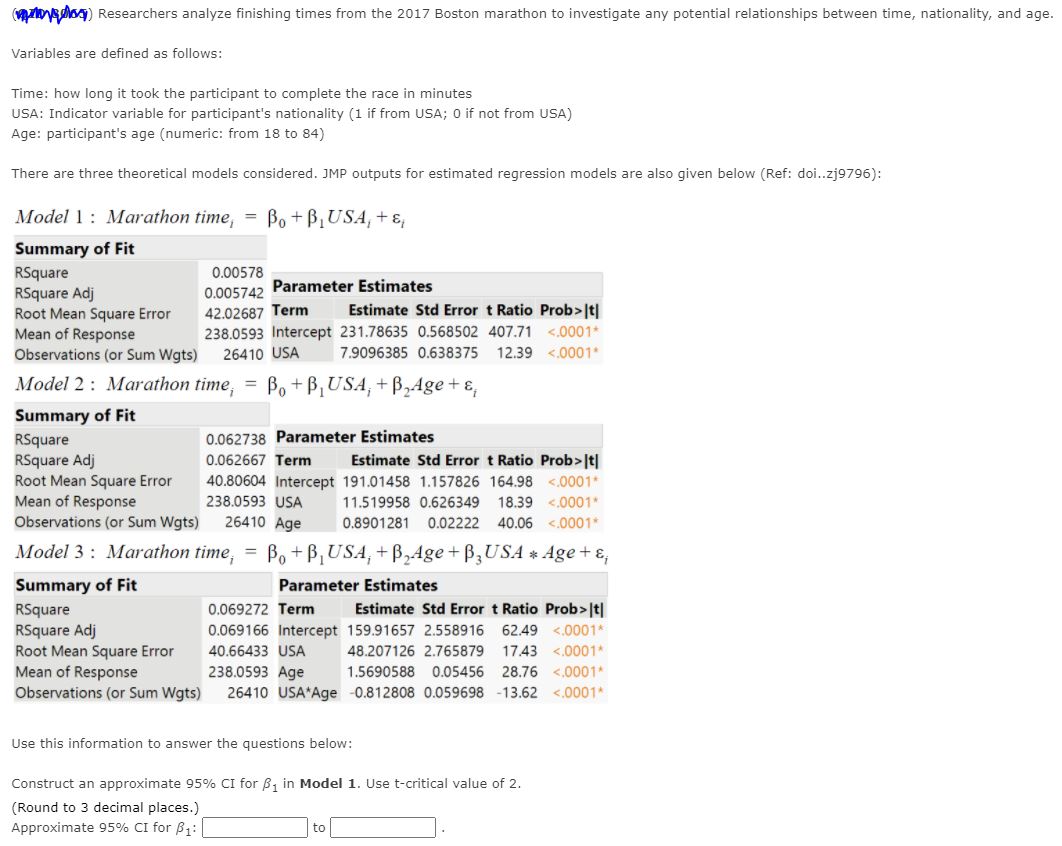Answered step by step
Verified Expert Solution
Question
1 Approved Answer
Please explain how you got the answer wwwwwsdo4) Researchers analyze finishing times from the 2017 Boston marathon to investigate any potential relationships between time, nationality,
Please explain how you got the answer



Step by Step Solution
There are 3 Steps involved in it
Step: 1

Get Instant Access to Expert-Tailored Solutions
See step-by-step solutions with expert insights and AI powered tools for academic success
Step: 2

Step: 3

Ace Your Homework with AI
Get the answers you need in no time with our AI-driven, step-by-step assistance
Get Started


